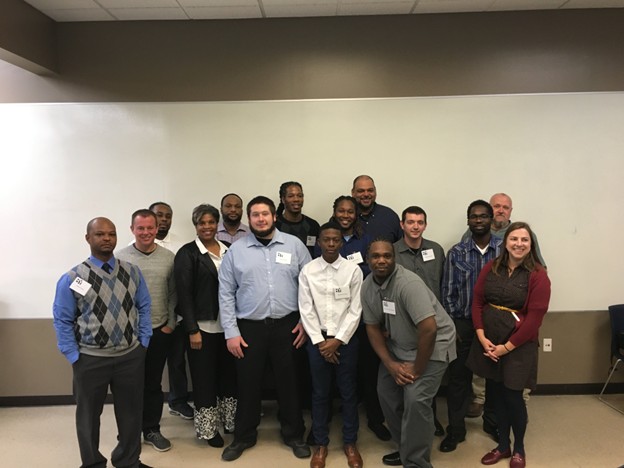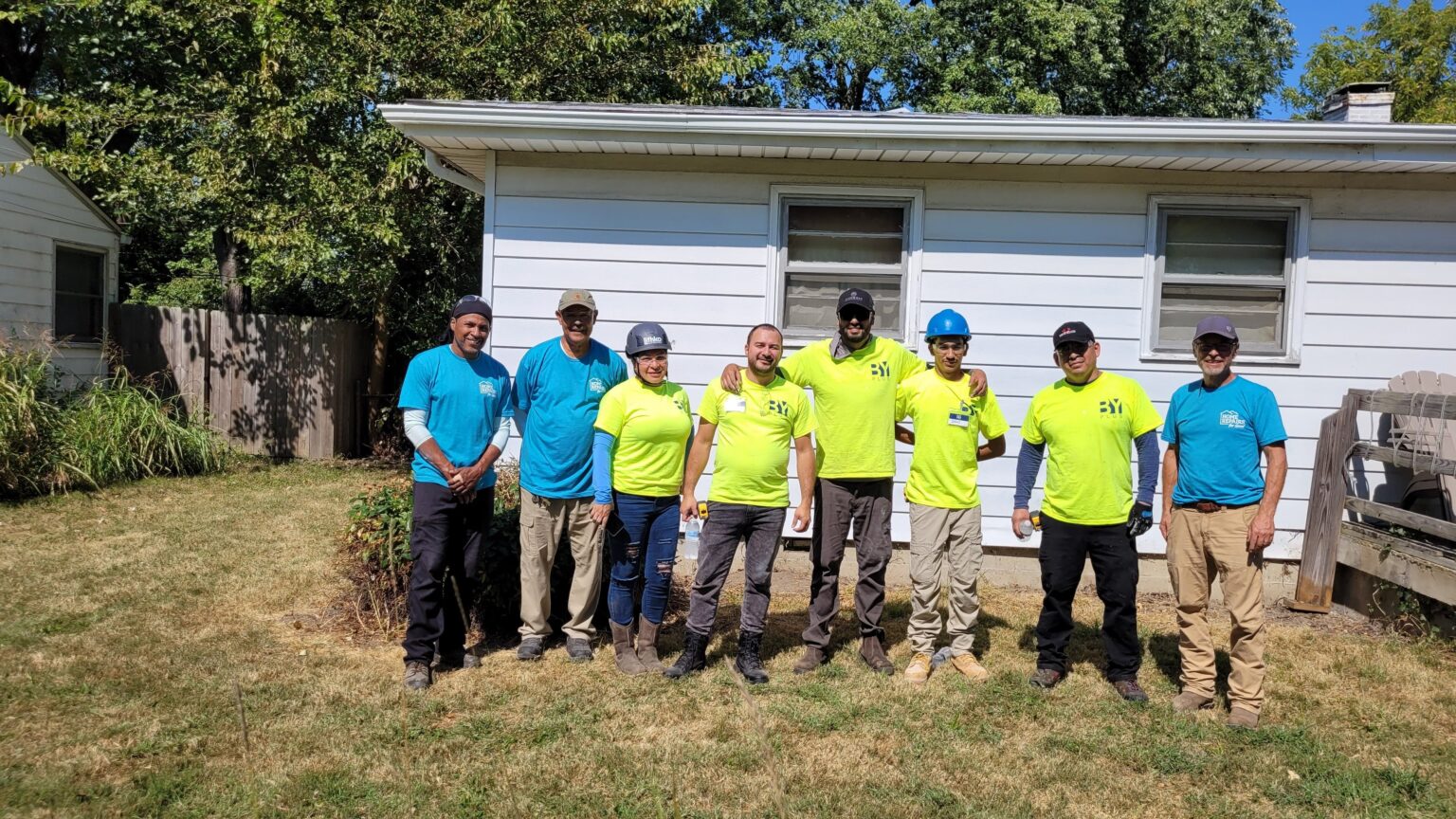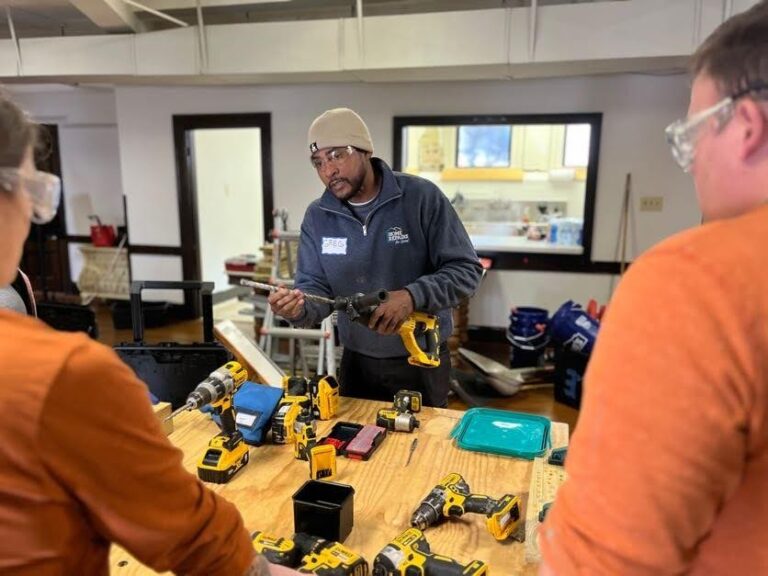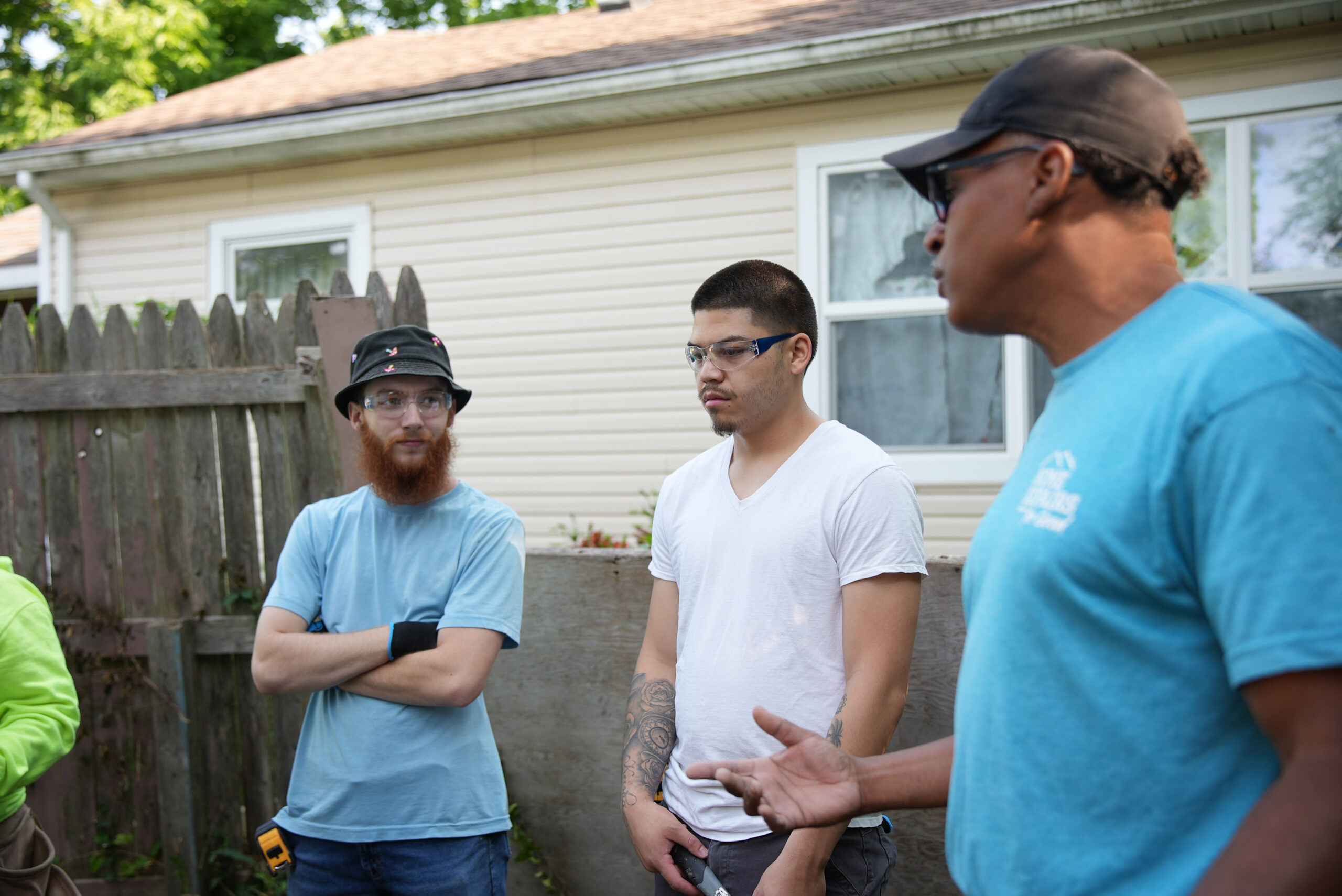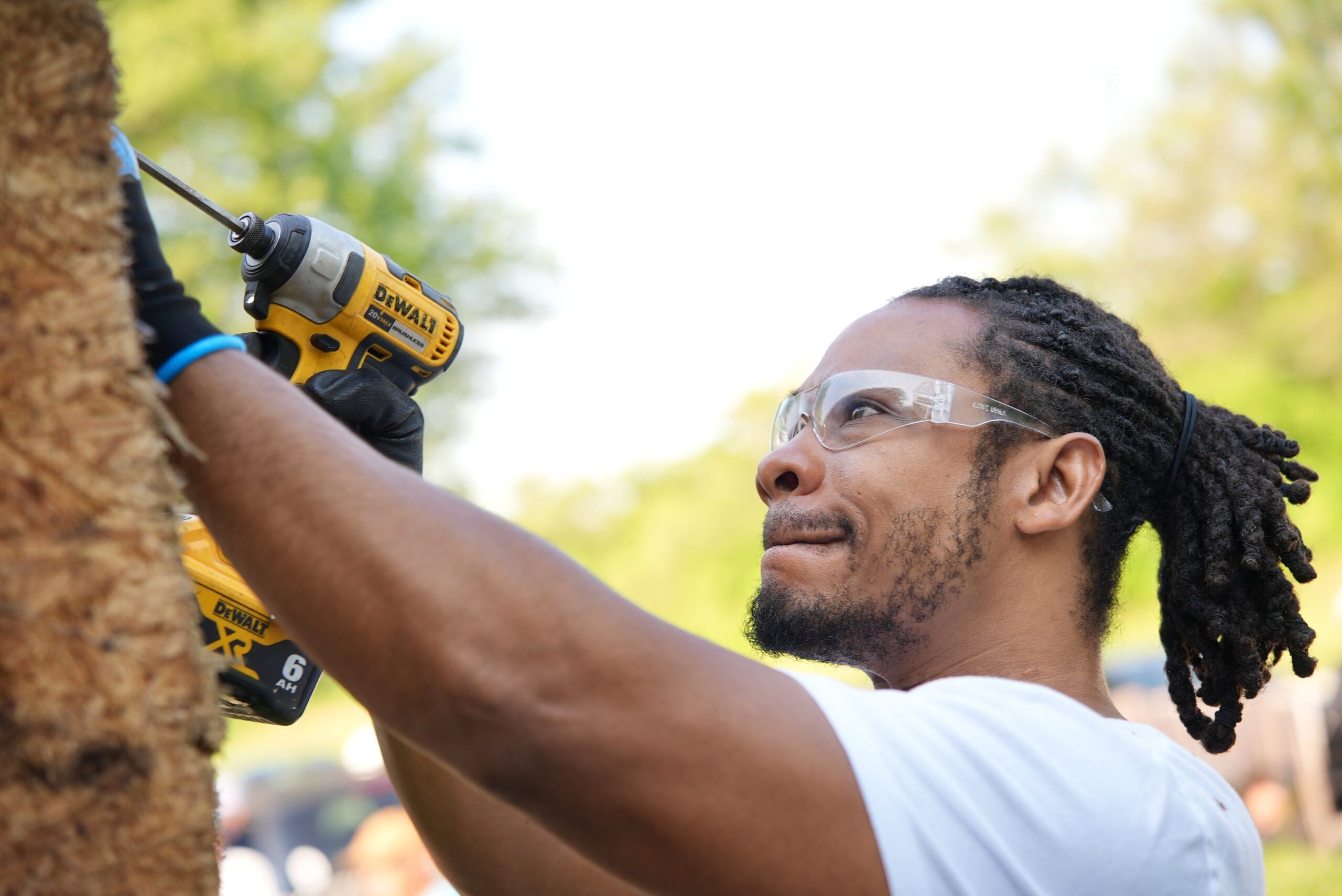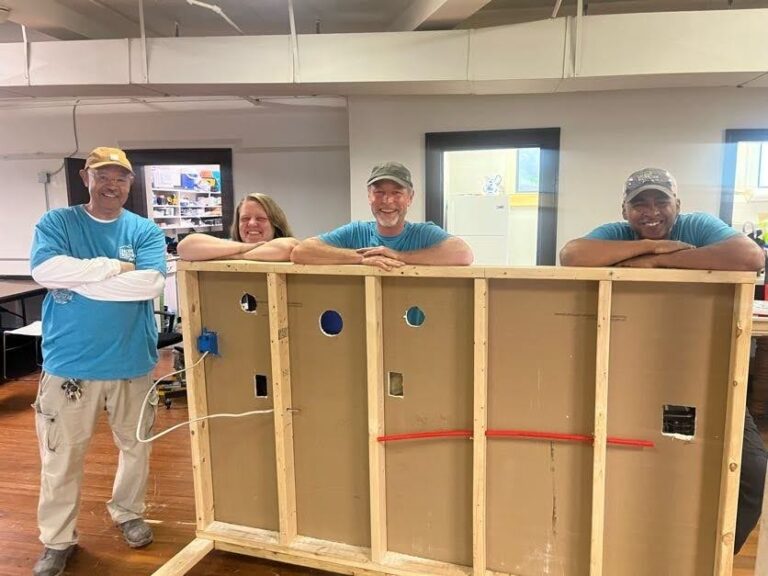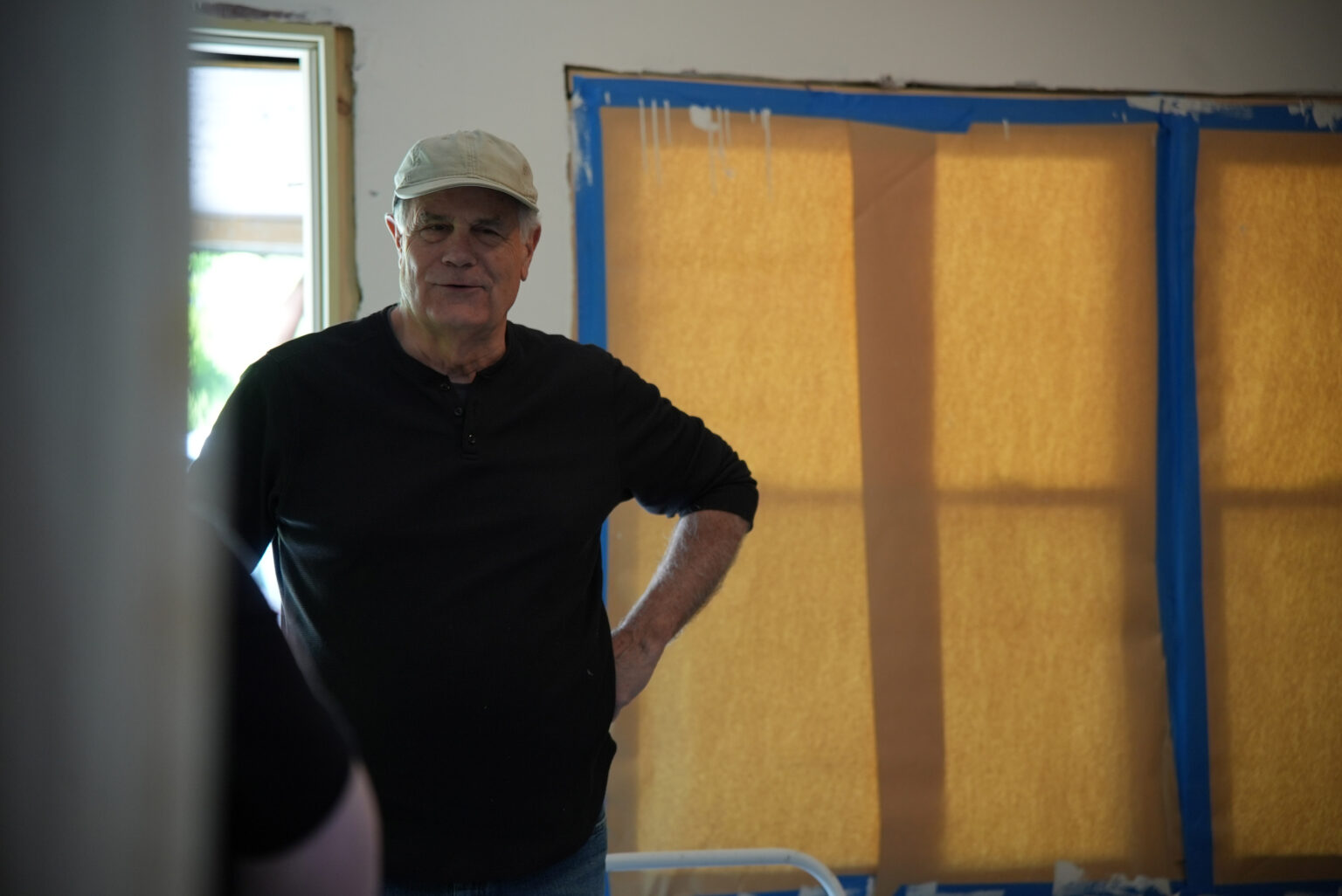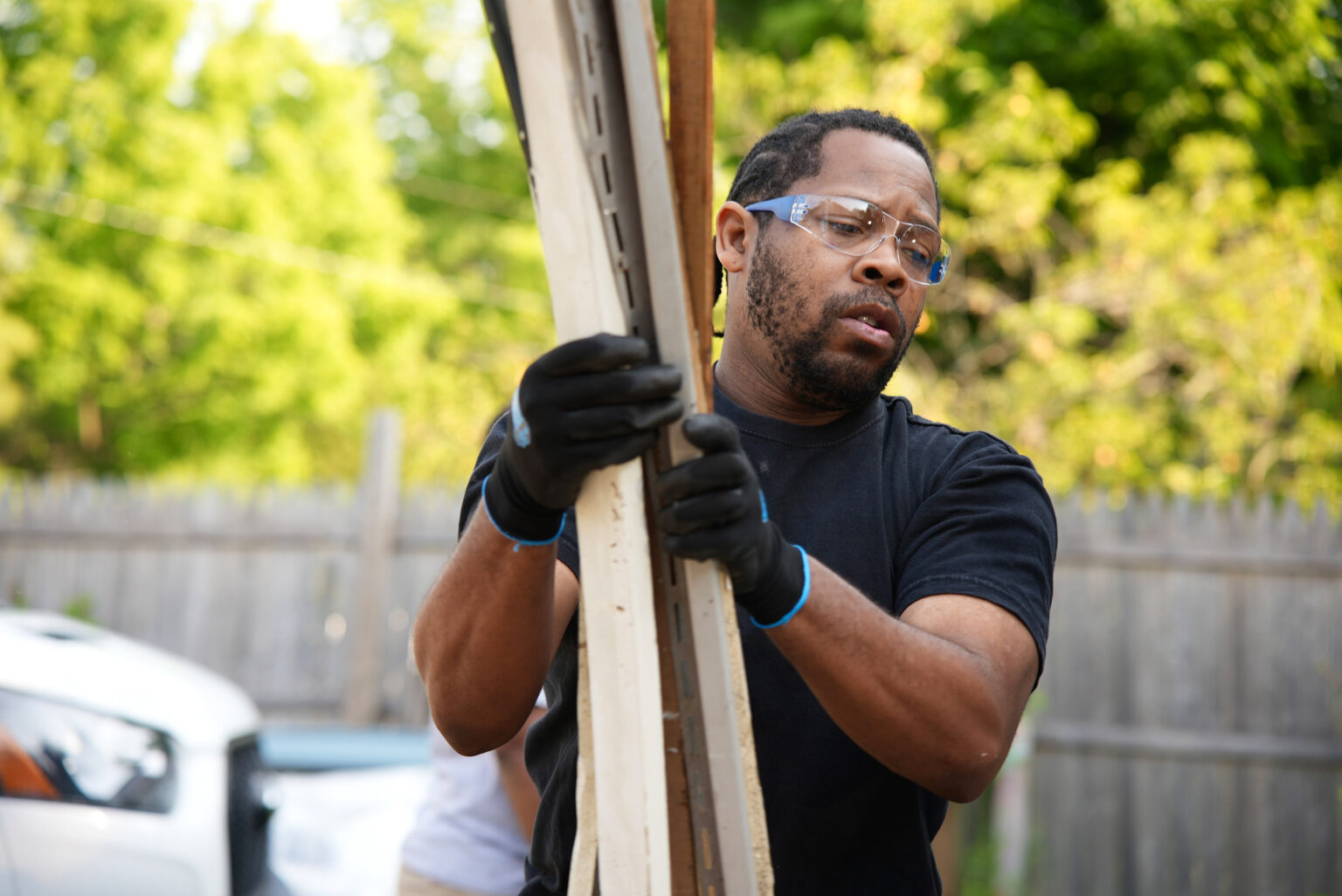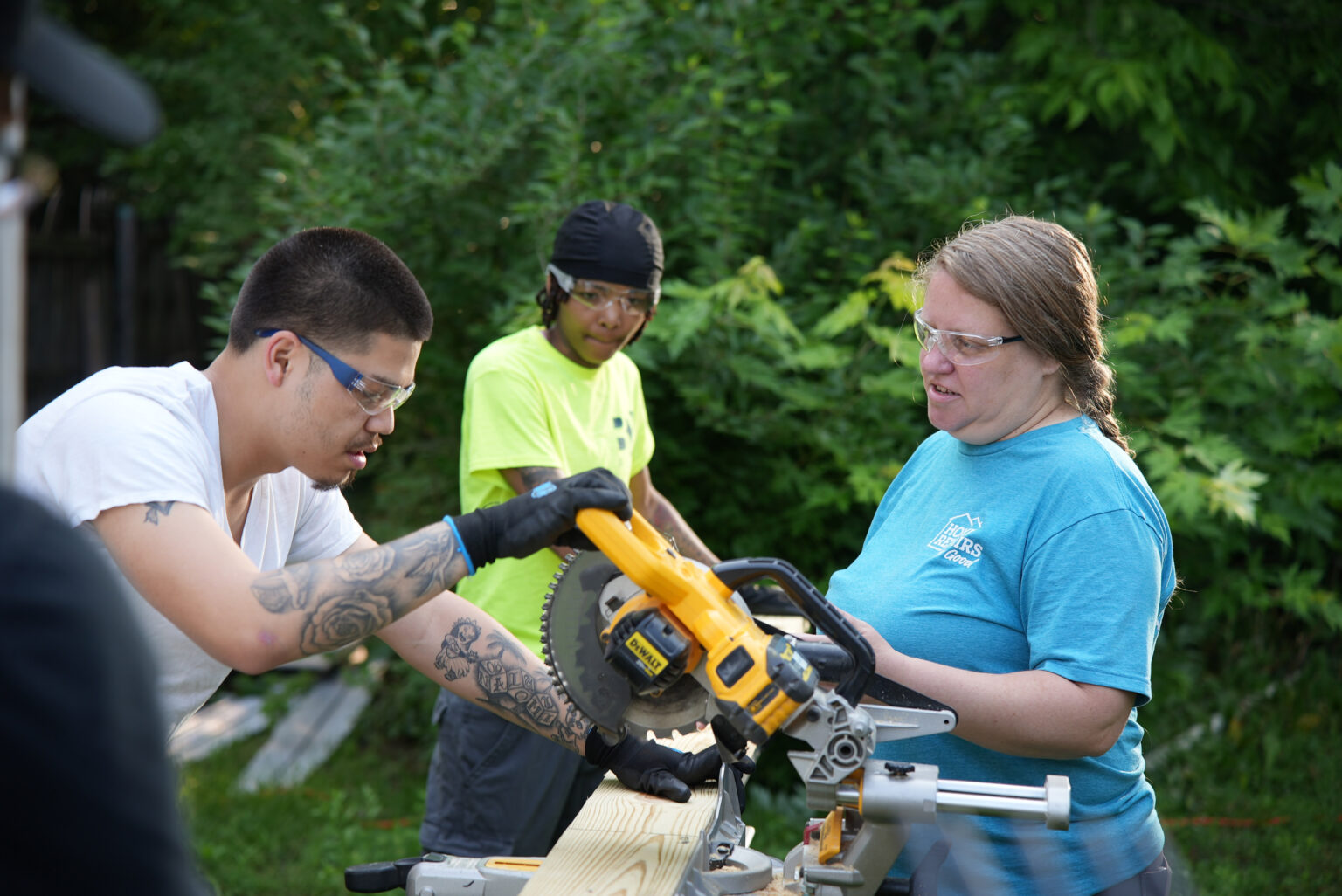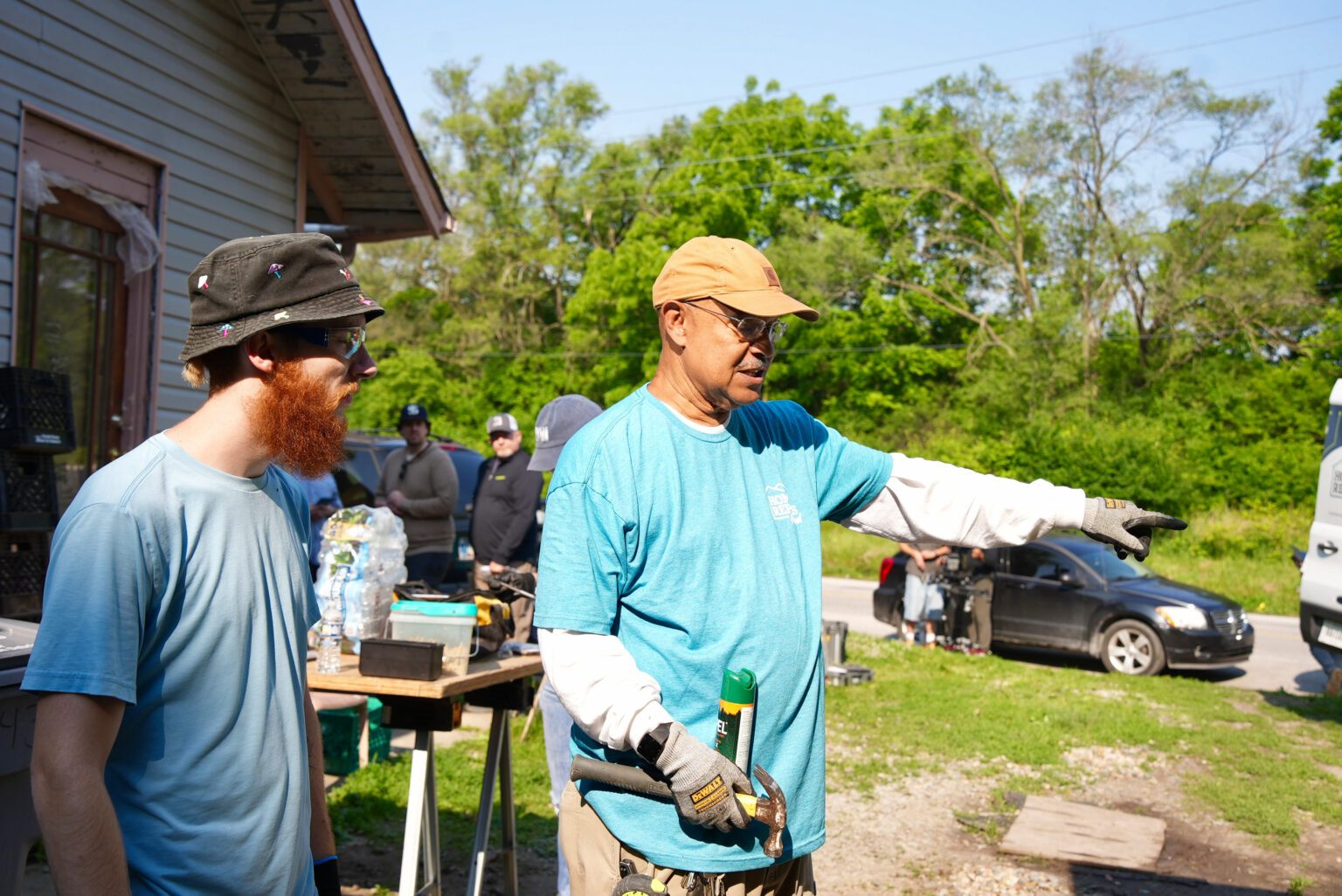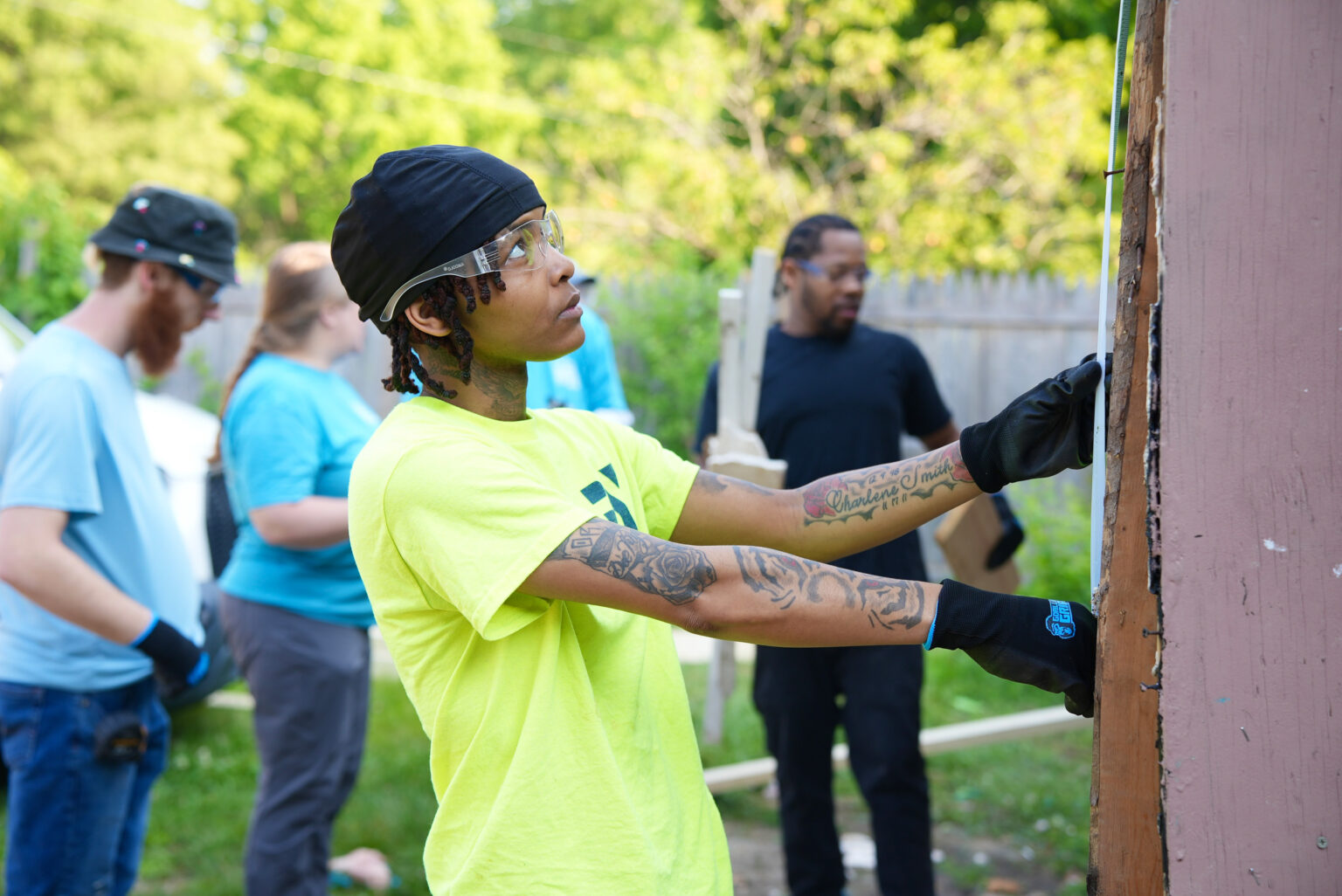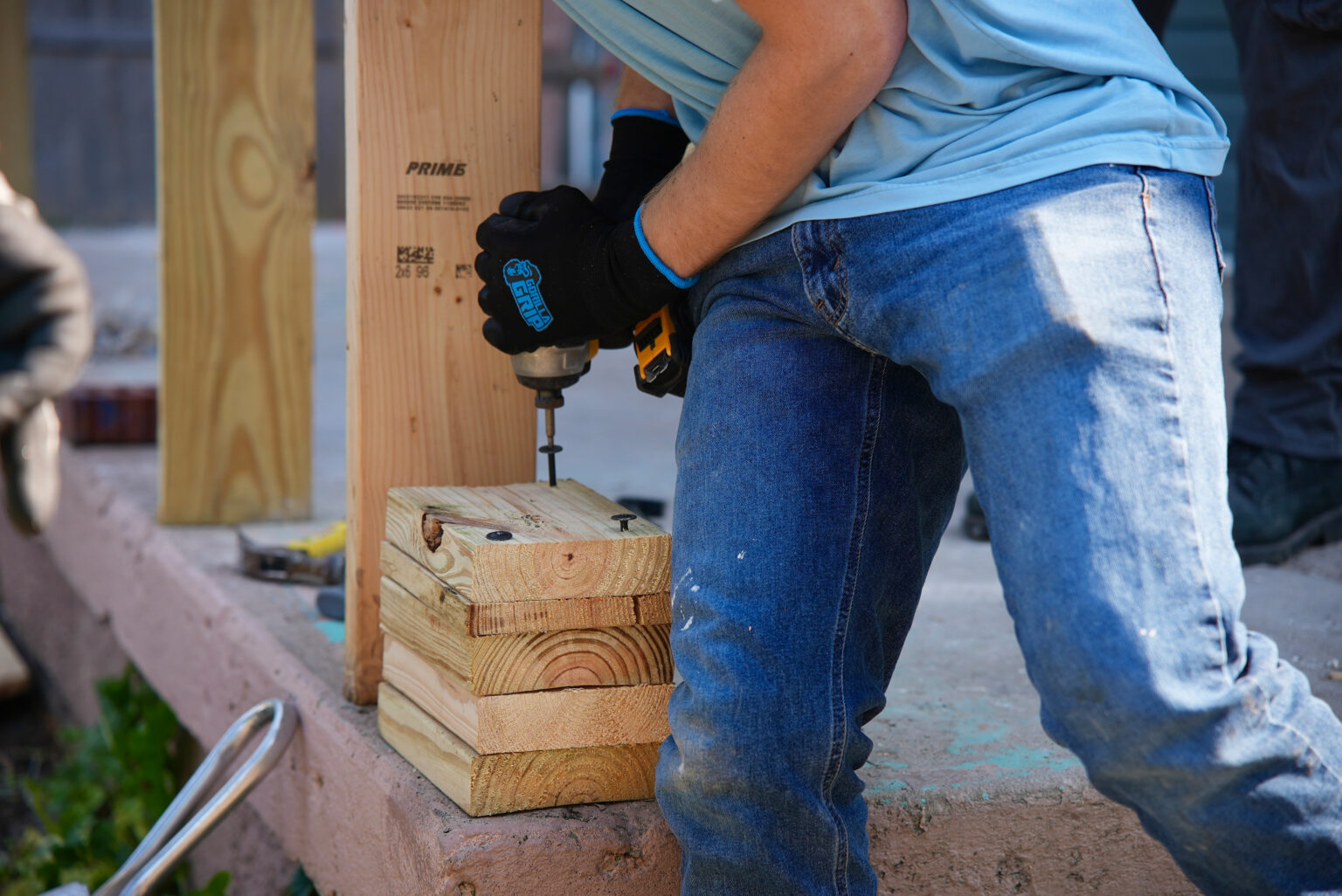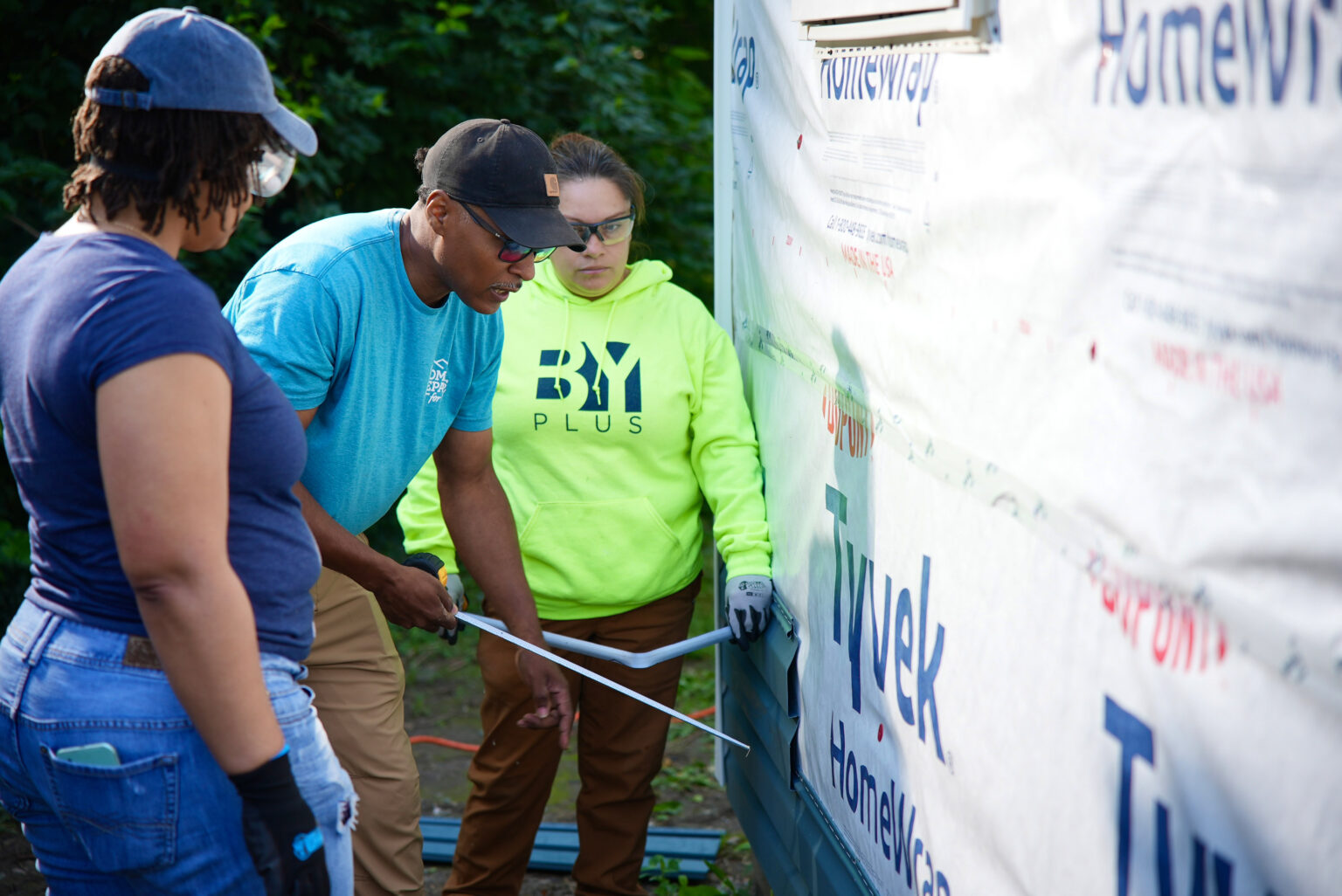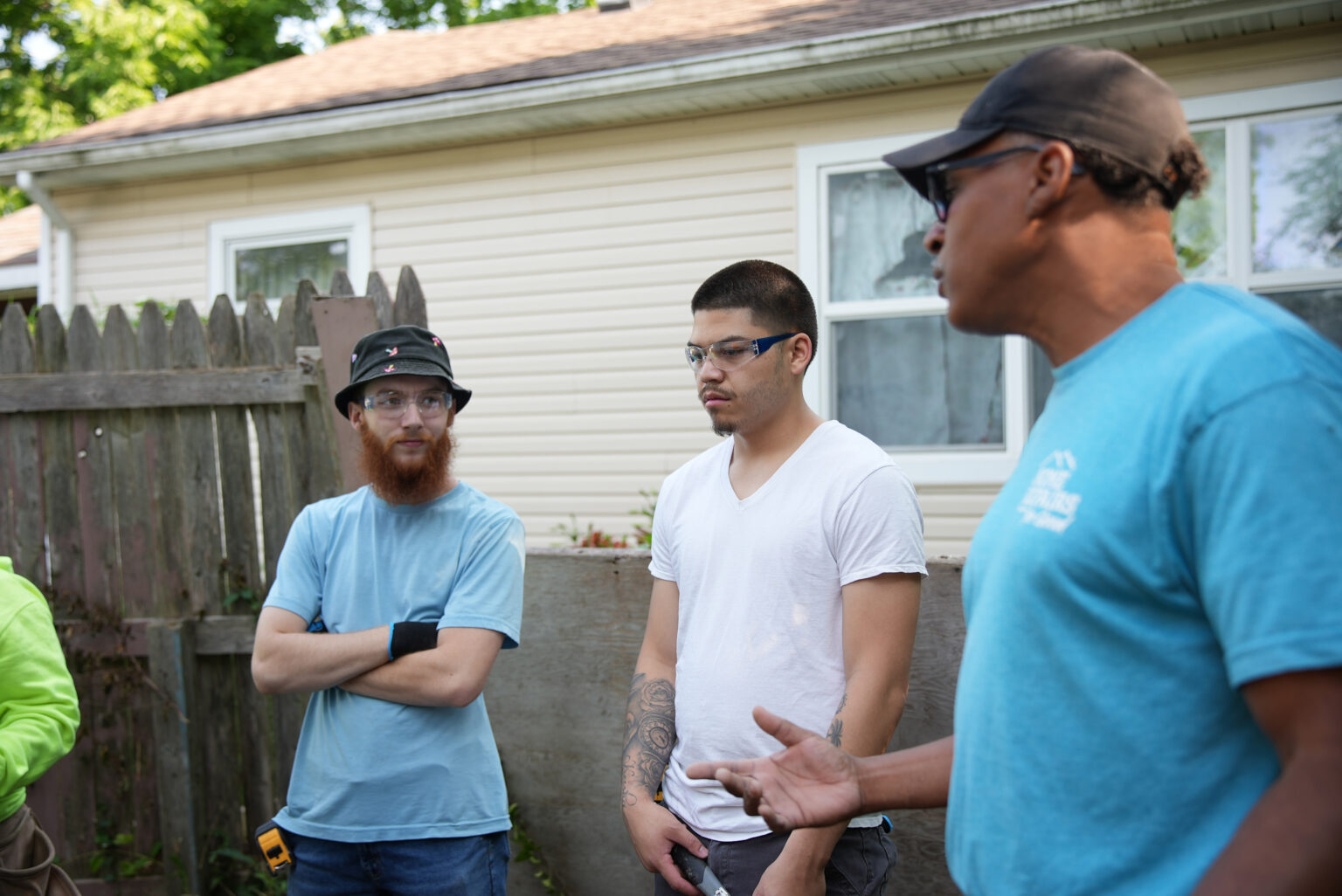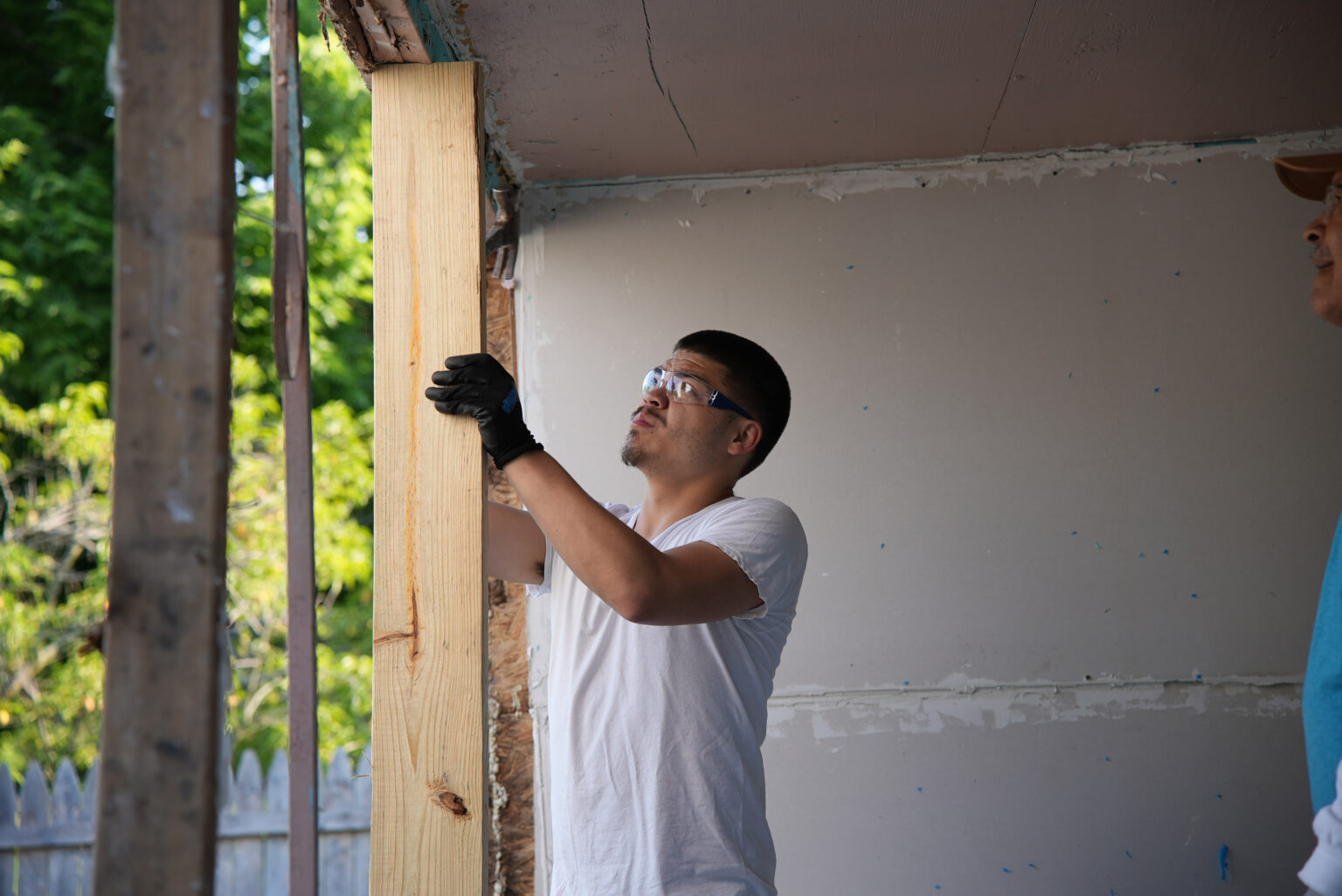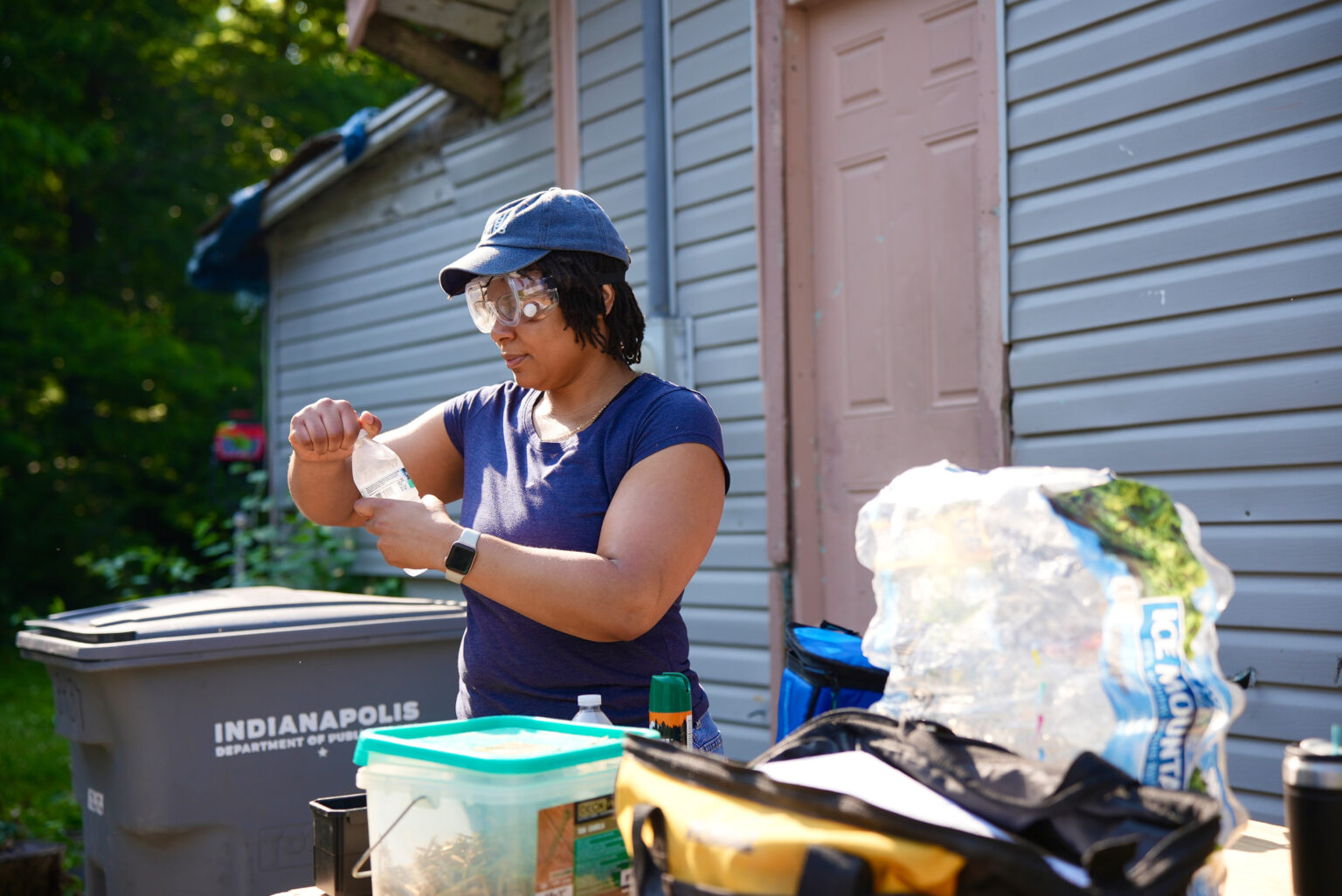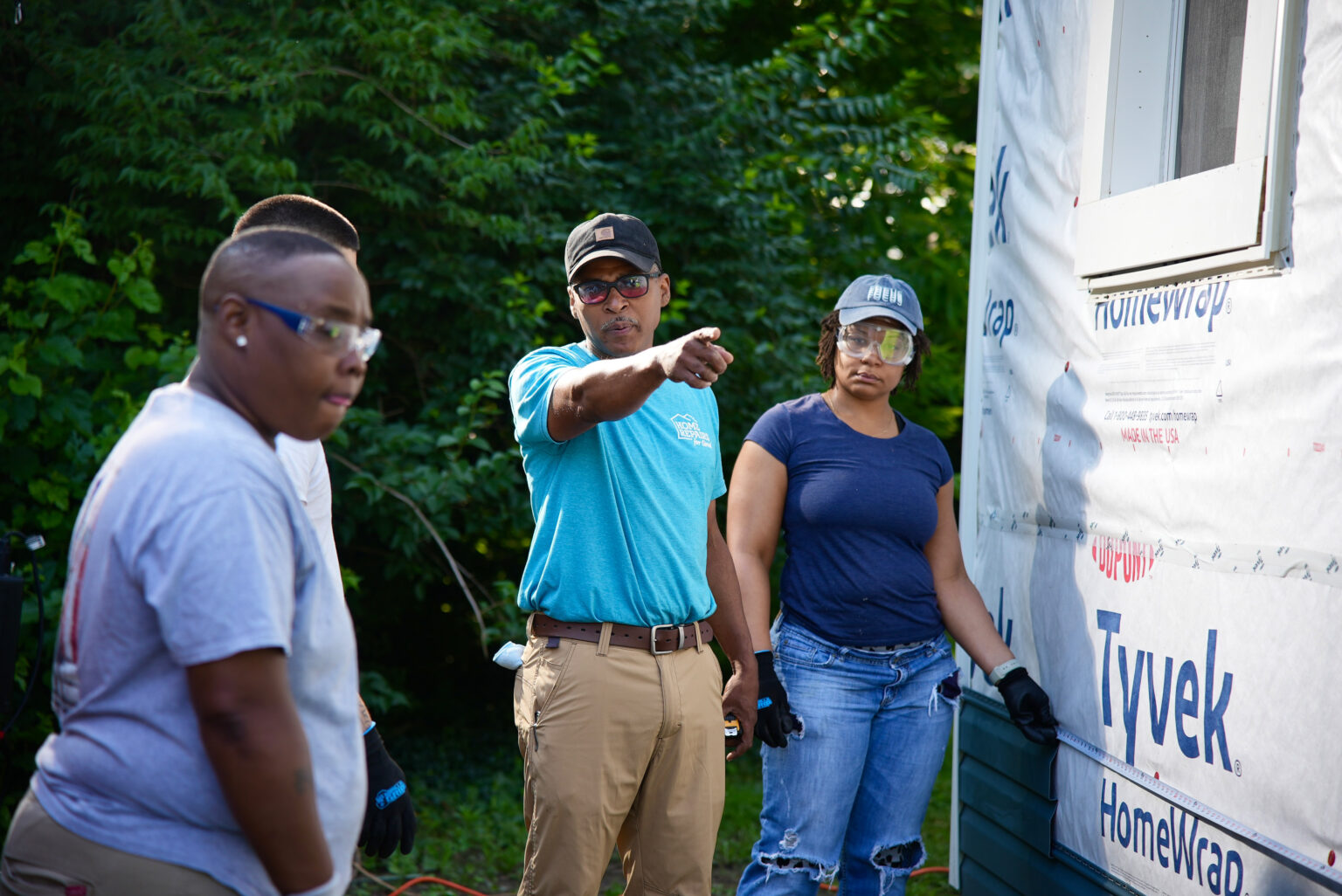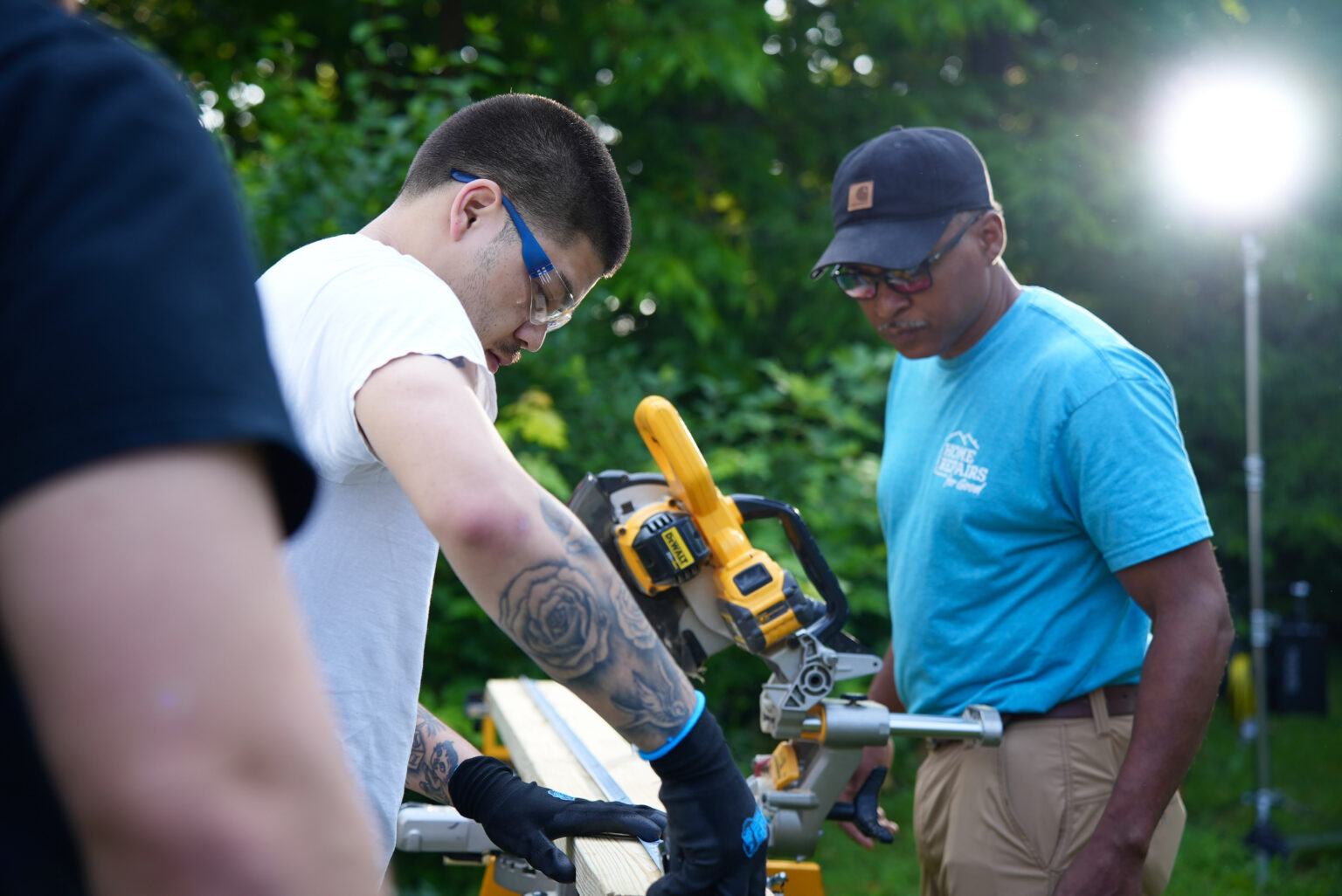From Hard Hats to Hope: How the BY Plus construction training program breaks down barriers to a better life
How the BY Plus construction training program breaks down barriers to a better life
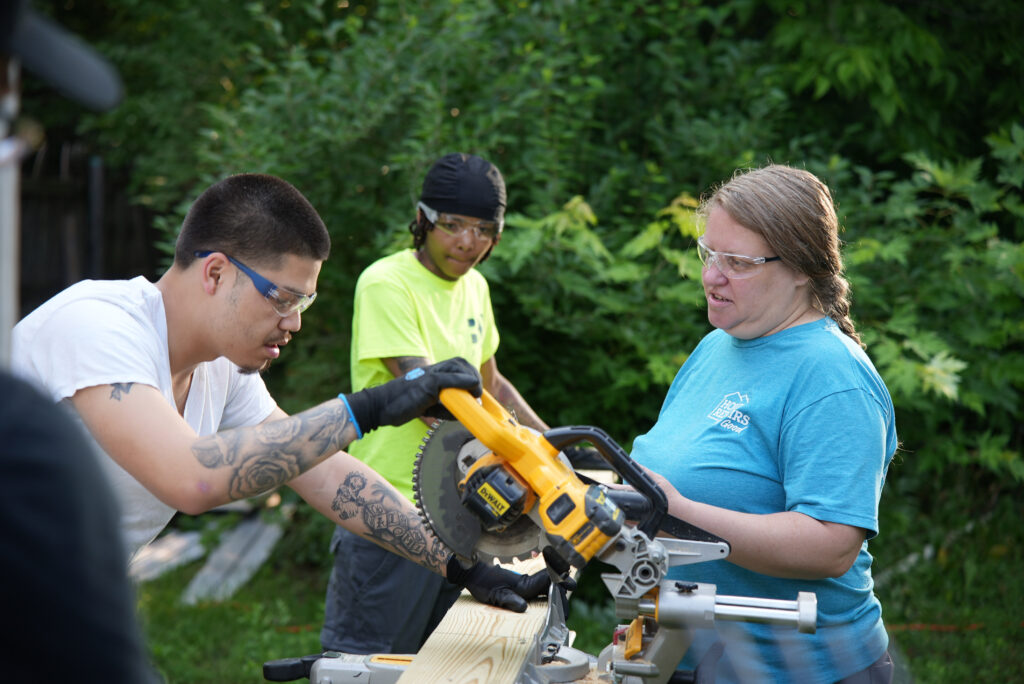
Allen Humphrey stands at the podium, staring out at a crowd of fresh-faced graduates. They’re dressed in gowns, but instead of caps, their heads are crowned with hard hats.
A year and a half earlier, Humphrey couldn’t have imagined himself on stage, sharing his story. Back then, he was juggling two fast-food jobs, just scraping by, and relearning to walk after being shot in 2023.
Then, last March, he took a chance on a free construction training program called BY Plus. In less than a month, he had earned his NCCER Core and OSHA 30 certifications. But, he says, the program gave him more than just credentials.
“I tell the graduates about the position I was in before the program, and the position I’m in now,” he says. “How it helped me get my bank accounts in order, taught me how to set up an LLC. I paint a picture of how it changes your life.”
As a self-described “Section 8 kid” who grew up in a hardscrabble neighborhood, standing before an audience still feels new to Humphrey. Meanwhile, the metal screws that run from his hip to his knee serve as a constant reminder of the path he’s walked to get here.
Humphrey’s story, however, isn’t defined by his past. It’s being shaped by what he’s chosen to do with his future. His journey—from BY Plus trainee to commencement speaker—shows what’s possible when workforce training meets people where they are and removes the barriers that hold them back.
Thinking Beyond the Workforce Gap
Sometimes the best ideas emerge not from boardrooms or strategic planning sessions, but from people doing the work, noticing problems, and wondering what could happen if things worked a little differently.
John Floreancig of the Indianapolis Legal Aid Society (ILAS) is one such person. He had been watching a struggle play out in Marion County’s reentry courts, where job training programs were recruiting people post-incarceration. “A lot of these people didn’t even have driver’s licenses,” he says. “Others had child support backpay issues. They had myriad legal problems.” Floreancig knew these barriers would keep people from succeeding in training, let alone the workforce.
At the same time, Chris Price had been wrestling with workforce challenges at the Indiana Construction Roundtable Foundation (ICRF) for years. “Workforce development has been a focus of the Indiana Construction Roundtable going all the way back to 1998,” Price says. The construction industry was already short of workers when the 2008 recession exacerbated the situation further. “We lost a lot of people who never returned to the industry.”
By 2014, the construction workforce crisis was boiling over. That’s when Price connected with Dr. Robert Taylor, a school superintendent in Lebanon who had a small workforce development grant. Together, they developed a vision for what would become the ICRF in 2015, which launched the original BY—or “Build Yourself”—construction training program in 2018.
Former IndyGo CEO Michael Terry said that the original version of the program worked for some students, but not others. “Many students had barriers to success, with transportation being the biggest one.”
It also became clear that trainees would benefit from real work experience on a construction site. What emerged from these parallel observations was less a single idea than a recognition that a solution already existed, scattered across various organizations.
ICRF knew how to train workers. The Indianapolis Legal Aid Society knew how to navigate legal barriers. Home Repairs for Good (then called NeighborLink) needed workers for low-income homeowners who couldn’t afford major repairs. And the Central Indiana Community Foundation had the fiscal and operational capacity to bring everything together.
Alongside CICF, Terry helped secure funding for the program via a Lilly Endowment Enhancing Opportunity in Indianapolis grant. He also came aboard as program coordinator, contributing to a new sort of construction training program that, according to Price, “shifted to focusing more on the student and supporting them holistically before they even got to class.”
In other words, BY Plus doesn’t just address the workforce gap but also other, more human gaps. Like the gap between having skills and actually being able to use them. Or the gap between getting a job and keeping it. Or the gap between simply surviving and truly building a life.
Opening the Door Wider
Greg Martin had always been drawn to construction, inspired by memories of his grandfather, a postman who built his own toolbox and climbed ladders into his 70s. But when searching for a job in 2022, he faced the same challenge as many others. He had drive and ambition, but little experience—and fewer opportunities.
That’s when Martin discovered BY Plus. Soon, he was in a room with 30 strangers from different neighborhoods, different backgrounds, different stories. “The first day, nobody talks,” he remembers. “Nobody knows each other. We just kind of look at each other.”
But when instructor Jesse Linville asked the class that fundamental question—“Why are you here?”—the stories began to spill out. One man revealed that he had been sleeping in a car with his girlfriend and their 3-year-old baby. Others had part-time retail or fast-food jobs, or no job at all. Some were justice-involved. Some were homeless.
The faces in BY Plus classrooms reflect a broader shift in who gets invited into construction. What started as a program focused primarily on justice-involved individuals has evolved to welcome young people exploring career options, women entering a traditionally male field, minorities who might never have considered construction, and Spanish-speaking students through specialized bilingual classes.
By breaking down barriers for participants, the program has brought people into the construction industry who otherwise may never have felt welcome. Price calls this demographic shift “a powerful byproduct” of the program.
“There has been an uptick in the diversity of our industry, both with women and minorities pursuing careers in construction,” he says. “And you can see the participation rate has increased since we started our program.”
A Foundation of Trust
While the BY Plus program welcomes all kinds of participants, about 30% of those who enroll have experience in the criminal justice system. Many more are living at or below the poverty line.
Allen Humphrey fit this profile when he entered the program in early 2024. His background with the justice system complicated his job prospects. The shooting that left him temporarily unable to walk had created additional challenges. He had fallen behind on property taxes and faced the constant financial pressure of medical recovery.
“Working a nine to five job just wasn’t cutting it,” Humphrey says. “And with my background of being locked up, it was holding back what I could get done.”
Michael Terry has watched numerous people in similar situations walk into BY Plus classrooms. What strikes him most isn’t their desperation—though that is sometimes there—but their transformation. “It’s like this hard exterior just drops off,” Terry says. “They see a community of other individuals who are similar to them, and they’re going through this together.”
The evolution Terry describes doesn’t happen by accident. BY Plus program navigators—people like Daniel Perryman, who graduated from BY Plus in 2017 and returned as staff, and Meaghan Owens, who recently went from navigator to BY Plus program director—work alongside instructors to address what they call “barrier-busting items.”
“It’s hard to show up to anything if you have an eviction notice taped to your door or there’s no food in your refrigerator,” Owens says. And for many students, it’s just as hard to put their trust in a group of strangers when family itself has been a source of trauma.
“Some students are broken when they come in,” she says, tears welling in her eyes. “They don’t have family they can trust. Some don’t even know that people can love them and care about them. And our navigators and our instructors are building true relationships with them.”
It’s not something that happens overnight. It requires navigators to practice what Owens calls “authentic reciprocity.” “I’ll be authentically myself if you’ll be authentically yourself,” she says. “That’s how we see each other in those moments, and we build trust from there.”
Breaking Down Barriers
Perhaps no barrier to employment is more pervasive than the legal web that traps people in cycles of joblessness. The scope of the problem is staggering. “There are 100,000 driver’s licenses suspended in Marion County alone,” Floreancig notes.
The pattern is depressingly common: someone falls behind on child support payments, their license gets suspended, they can’t get to work, they fall further behind, and the cycle continues. Three decades in legal aid work have led Floreancig to understand a fundamental truth: “Many people think that poverty causes legal problems. Really, legal problems cause poverty.”
This insight is foundational to BY Plus. Every first class includes a presentation from ILAS attorneys, and every student receives priority access to legal consultation. “Every student has the opportunity to consult with a lawyer, and we urge them to do that,” Floreancig says. “We want to make sure they don’t have hidden legal problems that they may not know about.”
For Humphrey, this proved critical. “They helped me get my driver’s permit and everything,” he says. The attorneys also helped him navigate his property tax challenges, setting up a payment plan that made his situation manageable.
But legal problems are just one barrier. Unlike traditional training programs that end with a certificate and a handshake, BY Plus includes a paid work experience component through its partnership with Home Repairs for Good. This arrangement gives students real-world experience while helping homeowners avoid losing their homes to health and safety violations.
Humphrey, for example, found himself learning to frame a porch and pour concrete while the homeowner watched years of deterioration finally being addressed. “It’s helping someone who can’t afford to help themself while learning how to do different things,” he says. “And every time I drive by that house, I remember, ‘I did that.’”
Many students work in neighborhoods where they grew up, helping people they know. Rachel Nelson, executive director of Home Repairs for Good, sees this connection as transformative. “We are in the communities that many of these individuals come from,” she says. “So whether they know the homeowner through a family relation, through a friend, through church, it can be a powerful thing.”
Tools That Transform
Tool training—learning to safely operate heavy equipment that can build or destroy—is a critical part of the BY Plus class. But there’s another set of tools that students acquire. This part of the class covers everything from time management to workplace practices like calling your boss when a problem makes you late to work. These tools are just as important as the ones graduates learn to wield on a worksite.
For Humphrey, mastering these skills led to unexpected outcomes—such as earning a full-time job at Home Repairs for Good. But perhaps the most profound change has been psychological. Growing up, he had become accustomed to being recognized for his possessions, not his accomplishments.
Greg Martin, now a project coordinator for the BY Plus program, noticed this shift during a recent conversation with Humphrey. “Allen told me, ‘Greg, people have always complimented my shoes or whatever. But I’ve never had anybody compliment me,’” Martin says. “Since I’ve been in the BY Plus program, I’ve had people compliment me for who I am—because of what I do and how I show up.”
Rachel Nelson says this kind of personal transformation gets to the heart of what BY Plus is all about.
“We’re working with individuals who’ve never had the chance to even think about a career, to imagine a future, to see something that could provide for them and their families and give them a bigger dream,” she says. “By providing this path, we’re able to affirm, ‘Yes, you are capable. Yes, these are your skills. Yes, this is how you can take that next step toward a stable, meaningful career.’”
Putting People First
The timing of BY Plus couldn’t be more critical. Indiana continues to face an unprecedented shortage in its construction workforce, driven by what Price describes as extraordinary economic growth.
“If you look at what’s been accomplished as a state over the last four and a half years, there was roughly $100 billion in commitments. That’s more than the previous 15 years combined,” Price says.
With construction workforce needs at an all-time high, the challenge demands innovative solutions like BY Plus—and the numbers bear out its success. In 2024 alone, the program trained 447 individuals, with 440 graduating and 423 earning OSHA 10 and NCCER Core certifications. More than 80% of graduates move into construction roles.
Greg Martin says the program’s recent growth speaks for itself. “In the last year, we’ve tripled production, going from about nine classes a year to more than 20,” he notes. But he’s quick to add that these metrics don’t capture the program’s full impact. “It’s more than just teaching construction skills,” Martin says. “It’s the confidence it builds.”
To illustrate, Martin shares the story of a recent graduate named Tyrone, whom he describes as “young but driven.” At a hiring fair, Tyrone faced the kind of practical test that determines a future in the trades.
“All the construction companies were giving them tasks to do,” Martin recalls. “Tyrone told me, ‘I saw others running around, but I knew from being on a worksite that you don’t run. So I didn’t. I walked. I walked with presence.’”
The strategy worked. Tyrone landed a position with a carpentry union, starting at $35 an hour with a clear path to $65. When Martin asked how much impact BY Plus had on his success, Tyrone didn’t hesitate: “Everything. I got everything from this class.”
Price credits success stories like Tyrone’s to the program’s people-first approach. “A lot of times with workforce development, you get an industry focus,” he says. “But we do this to empower people. Having a people-focused mission really builds a culture where everyone on our team, and all of our partners, are focused on helping people.”
The Village It Takes
It starts with the frontline team of instructors and program navigators who walk alongside students as they build new futures.
“People probably don’t realize how important they are in developing those relationships,” Beth Millikan, Controller at CICF says. “These individuals experience periods of being unhoused. They have family issues and childcare challenges. Those navigators are critical.”
As Owens puts it, “It’s the navigators who are advocating for students in tough moments and teaching them tools that will be useful for the rest of their lives.”
But the village that makes BY Plus work extends beyond the classroom. It’s a coalition of organizations willing to do far more together than any one could alone: the Central Indiana Community Foundation, Indiana Construction Roundtable Foundation, Indianapolis Legal Aid Society, and Home Repairs for Good, all supported by the Lilly Endowment.
As Terry says, “The phrase ‘It takes a village?’ That’s what’s happened here. We’ve got a village of support that’s occurring, versus a program that previously was lacking the support system to help individuals from the beginning through post-graduation.”
Thanks to this village, people across Indianapolis who have long been overlooked are learning to trust, to confide, and to imagine futures they hadn’t dared to consider before. Some will struggle. A few may drop out. But many will graduate, find work, and discover that their potential can take them farther than they ever imagined.
At its core, BY Plus is about more than construction. It’s about people. The wraparound support, trusted navigators, and coalition of partners work because the mission is human-first. As Owens says, “Success for one person may look different than it does for the next. We don’t define it for you. Being part of the village that helps you get there—that’s our role.”
BY Plus is proof that when a community comes together with a shared mission, lives can be changed, futures can be built, and hope can be restored. It’s not just about filling jobs. It’s about building people—and letting them build the life they deserve.

